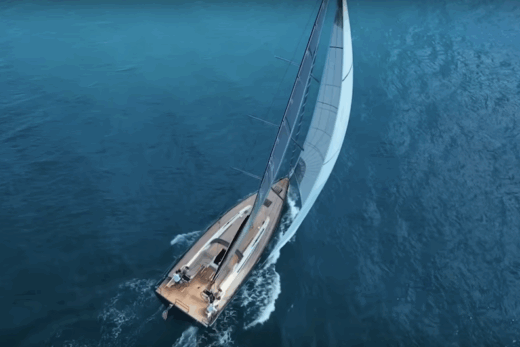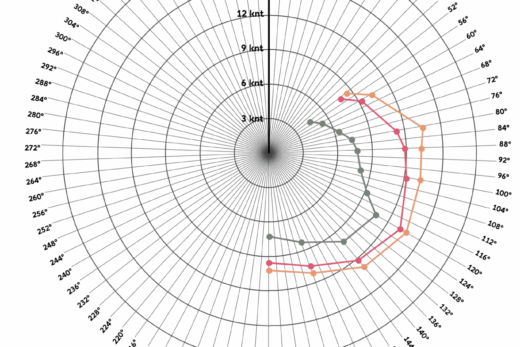
Ceux et celles intéressés par l’avenir des cartes marines en papier au Canada peuvent lire ce rapport datant de 2016. Beaucoup de choses ont changées depuis, notamment la NOAA qui a migré vers un modèle sans carte papier. La rapport est un sommaire d’une analyse qualitative auprès des utilisateurs et des producteurs de cartes.
La méthodologie me semble très bien. Je reproduis quelques extraits pertinents ci-dessous, reflétant tantôt les intentions, et les arguments que j’ai trouvé les plus marquants. Pour ceux et celles qui ne veulent que le sommaire, les trois premières citations constituent le meilleur résumé de la position canadienne: le Service Hydrographique Canadien semble faire une transition très lente vers les cartes électroniques et cherche à réduire les coûts de production des cartes en papier.
Notez que le Service Hydrographique Canadien a peut-être produit d’autres rapports depuis. La seule autre source que j’ai identifié qui est plus récente est la page portant sur la transition électronique. Cette dernière fait état de la transition vers l’électronique, mais reste muette quant à l’avenir des cartes en papier.
Extraits
The CHS does not plan on going completely electronic in the immediate future but has
Havens and Fontaine (2016), p. 39.
started undertaking initiatives to ensure it is well positioned for the impending
international shift to electronic navigation.
Acknowledging that marine navigation is moving towards primarily
id, p. 6.
using electronic systems over the use of paper charts, the options presented are
designed to align with this shift.
If the CHS wants to start making more of a shift to electronic (ENC)
ibid, p. 55.
navigation then there has to be a transition away from requiring mariners to carry paper
charts. Gradual steps need to be taken towards better supporting electronic means of
navigation in order to maintain maritime safety and chart user satisfaction.
With the Navy’s decision to go paperless a number of years ago, they stopped teaching
ibid., p. 17.
new students to use paper charts and moved away from interacting with paper charts in
any form; students were strictly exposed to electronic navigation at that point in time. A
consultation response given by a Lieutenant Commander involved with the Venture
training school for the Navy disclosed that this change actually hindered the students’
ability to understand electronic charts and interact with them in such a way as one
would expect a sensible, professional mariner to do. Following this realization
approximately five years ago, they moved back to teaching core skills with the use of
paper charts. The Navy experienced that without learning navigational skills on paper
charts the students were lacking basic situational awareness skills; they determined that
individuals are successful at using electronic charts because they have a broader
context to their functioning as acquired through learning on paper charts.
There exists a general sense that there is too large of a gap between what paper charts
can offer and what electronic charts can provide; to be able to fully rely on electronic
systems and move completely away from paper chart options was thus not viewed as a
feasible option. Several comments were made about the size of the viewing screen for
electronic charts and the lack of fidelity of the information displayed. In many instances
a larger viewing surface, such as that of a paper chart, is pref erred
ibid, p. 20.
During the consultations, participants were asked what their thoughts were on shifting
ibid, p. 21.
from the traditional paper chart presentation to a printed digital version that resembled
the ENC presentation; the overall response was positive and the majority of chart users
were tentatively open to this idea.
The [Australia Hydrographic Service] is iteratively and carefully moving forward with reducing their paper chart portfolio to eventually shift to digital (ENC) only.
ibid, p. 39.
Eventually discontinuing RNC production, as the AHS has done, will require mariners to
ibid, p. 49.
either shift to ENC products or navigate using paper charts. Discontinuing one product
line would reduce some of the burden to the CHS resources and potentially facilitate
paperless navigation in the future. Given that the 2018 date to fully transition SOLAS
vessels to ECDIS and ENC navigation is approaching, the CHS should focus on
ensuring 100% ENC coverage by that date. Once 100% ENC coverage has been
achieved, eliminating raster charts would likely be the most logical option to pursue.
Moving towards printed ENCs as an alternative to the traditional paper chart brings with
ibid, p. 51.
it both advantages and challenges. Printed ENCs would reduce the efforts required in
production as multiple product lines would no longer need to be maintained. This would
meet the users’ needs of having a hard copy to work with and as backup in the event of
a power failure. The CHS would need to consider what additional elements would need
to be added to the printed ENC as a direct print out from the vector data would be
lacking certain crucial components such as annotations, various symbologies, and scale
generalizations. There would be considerable modifications needed to add the extra
content required on paper to make them useable. Most users consulted did not foresee
an issue with paper charts taking on a new presentation and in fact, streamlining the
ENC and subsequent paper reproduction to look similar to one another could facilitate
transitioning between the two chart types. Having a printed ENC as the type of paper
chart available would help mariners become more accustomed to the ENC
representation of data making it easier to eventually shift completely away from
traditional paper charts and RNCs.
Ce texte vous a plu? Il y en a d’autres dans la section « apprendre » de ce site
Référence
Havens et Fontaine (2016). Future Vision of the Paper Chart, Pêches et Océan Canada, Service Hydrographique Canadien. Récupéré en ligne en septembre 2023 à partir de cette adresse.



